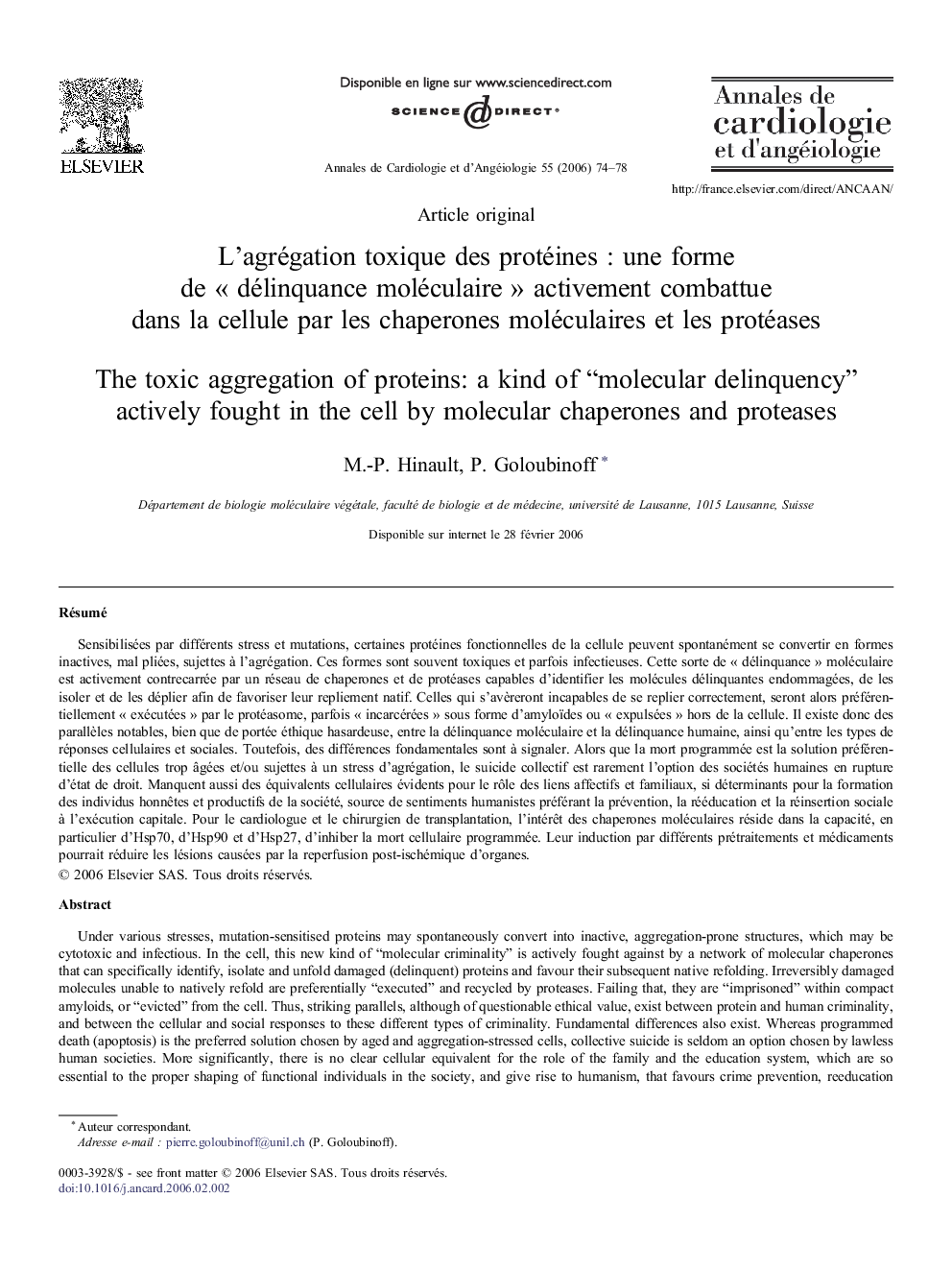| Article ID | Journal | Published Year | Pages | File Type |
|---|---|---|---|---|
| 2869612 | Annales de Cardiologie et d'Angéiologie | 2006 | 5 Pages |
Abstract
Under various stresses, mutation-sensitised proteins may spontaneously convert into inactive, aggregation-prone structures, which may be cytotoxic and infectious. In the cell, this new kind of “molecular criminality” is actively fought against by a network of molecular chaperones that can specifically identify, isolate and unfold damaged (delinquent) proteins and favour their subsequent native refolding. Irreversibly damaged molecules unable to natively refold are preferentially “executed” and recycled by proteases. Failing that, they are “imprisoned” within compact amyloids, or “evicted” from the cell. Thus, striking parallels, although of questionable ethical value, exist between protein and human criminality, and between the cellular and social responses to these different types of criminality. Fundamental differences also exist. Whereas programmed death (apoptosis) is the preferred solution chosen by aged and aggregation-stressed cells, collective suicide is seldom an option chosen by lawless human societies. More significantly, there is no clear cellular equivalent for the role of the family and the education system, which are so essential to the proper shaping of functional individuals in the society, and give rise to humanism, that favours crime prevention, reeducation and reinsertion programs over capital punishment. To the cardiologist and transplantation surgeon, the interest of molecular chaperones, in particular of Hsp70, Hsp90 and Hsp27, lays in their ability to inhibit the signalling pathway of programmed cell death. Their induction before and during ischemia, by various treatments and drugs could significantly reduce damages from the post ischemic reperfusion of organs.
Keywords
Related Topics
Health Sciences
Medicine and Dentistry
Cardiology and Cardiovascular Medicine
Authors
M.-P. Hinault, P. Goloubinoff,
